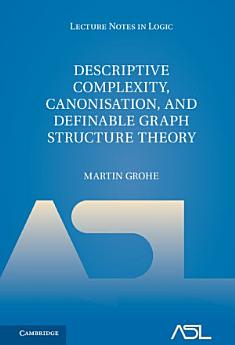Descriptive Complexity, Canonisation, and Definable Graph Structure Theory
aug. 2017 · Lecture Notes in Logic Bog 47 · Cambridge University Press
E-bog
554
Sider
reportBedømmelser og anmeldelser verificeres ikke Få flere oplysninger
Om denne e-bog
Descriptive complexity theory establishes a connection between the computational complexity of algorithmic problems (the computational resources required to solve the problems) and their descriptive complexity (the language resources required to describe the problems). This groundbreaking book approaches descriptive complexity from the angle of modern structural graph theory, specifically graph minor theory. It develops a 'definable structure theory' concerned with the logical definability of graph theoretic concepts such as tree decompositions and embeddings. The first part starts with an introduction to the background, from logic, complexity, and graph theory, and develops the theory up to first applications in descriptive complexity theory and graph isomorphism testing. It may serve as the basis for a graduate-level course. The second part is more advanced and mainly devoted to the proof of a single, previously unpublished theorem: properties of graphs with excluded minors are decidable in polynomial time if, and only if, they are definable in fixed-point logic with counting.
Om forfatteren
Martin Grohe is a Professor of Theoretical Computer Science at RTWH Aachen University, Germany, where he holds the Chair for Logic and the Theory of Discrete Systems. His research interests are in theoretical computer science interpreted broadly, including logic, algorithms and complexity, graph theory, and database theory.
Bedøm denne e-bog
Fortæl os, hvad du mener.
Oplysninger om læsning
Smartphones og tablets
Installer appen Google Play Bøger til Android og iPad/iPhone. Den synkroniserer automatisk med din konto og giver dig mulighed for at læse online eller offline, uanset hvor du er.
Bærbare og stationære computere
Du kan høre lydbøger, du har købt i Google Play via browseren på din computer.
e-læsere og andre enheder
Hvis du vil læse på e-ink-enheder som f.eks. Kobo-e-læsere, skal du downloade en fil og overføre den til din enhed. Følg den detaljerede vejledning i Hjælp for at overføre filerne til understøttede e-læsere.







